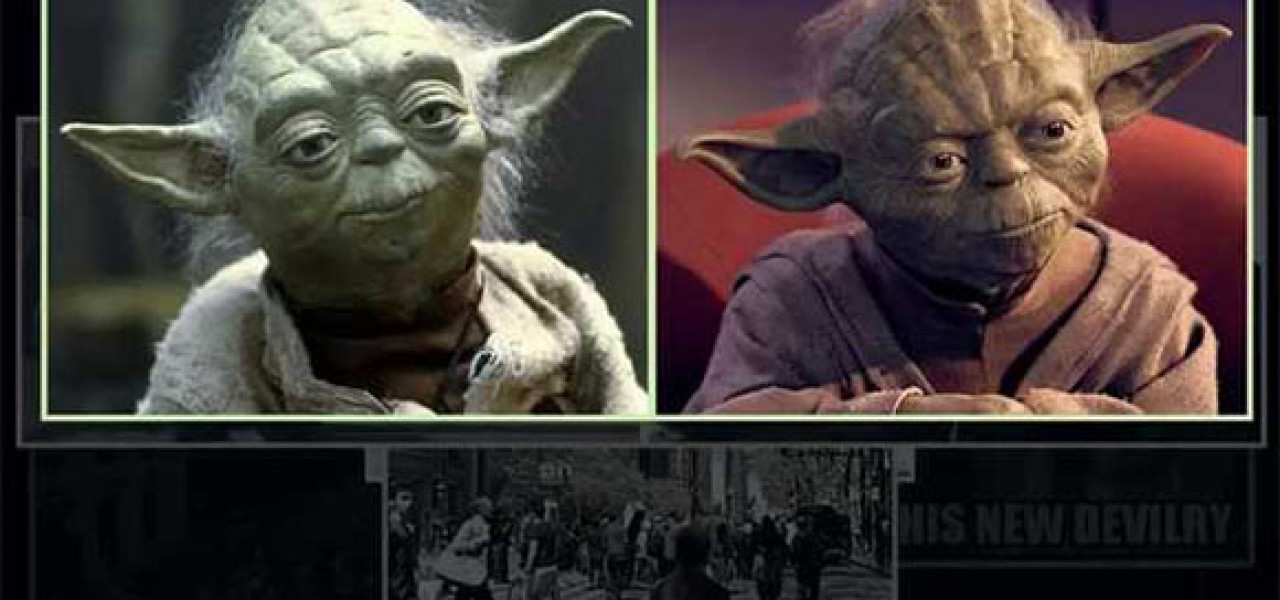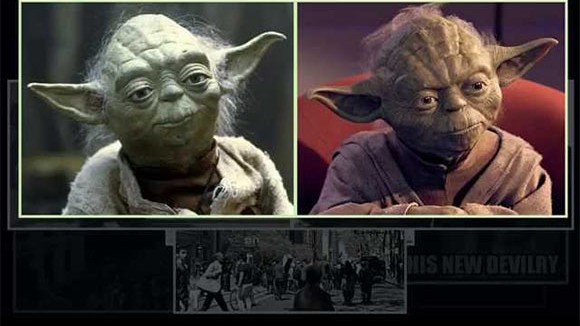

This “WETA Effect” Video Is The Dumbest Thing You’ll See All Week
Everyone is talking about this video — and for all the wrong reasons:
There’s so many layers of dumb piled atop each other that it’s almost impossible to know where to begin peeling back. We might begin with the illogical premise of the video, which is that as visual effects artists have begun to create “seamless, lush, and eye-popping environments…the power of the movies seems to plateau.” How has this subjective “power of the movies” peaked? The author, an anonymous individual who goes by Storybrain, believes that the evidence for plateauing movie quality lies in…brace yourselves…IMDB scores, which he proudly displays onscreen, complete with authoritative arrows drawn to highlight the scores.If you’re still conscious after banging your head repeatedly against the wall, the video maker then proceeds to make up a nonsensical term — the “WETA effect” — and theorizes about why one part of a film frame from the 2003 Hulk film is superior to a part of another frame from the 2008 Incredible Hulk.
Tony Zhou, creator of the highly regarded Every Frame A Painting video series, called the video “genuinely awful” on his Twitter. “I think he’s taken a feeling (modern blockbusters are worse) and then chosen a target (VFX or CGI) w/out understanding film,” Zhou wrote.
Other industry pros were unsurprisingly harsh, too. Todd Vaziri, a compositing supervisor at ILM, made this sardonic comment on Twitter:
The VFX industry should commission Clickhole to make a “9 Ways Modern Costumes Are Ruining Movies!” video essay.
— Todd Vaziri (@tvaziri) July 3, 2015
Director Lexi Alexander (Punisher: War Zone) had advice for anyone else thinking of making videos like this:
I think everybody who writes shitty think pieces on CGI ruining the movies should at least spend 1 week next to a VFX artist working.
— Lexi Alexander (@Lexialex) July 3, 2015
Now, you might ask, who cares? There’s as many dumb think pieces on YouTube as there are teenagers with access to a webcam and video editing software. What’s one more ill-informed potshot at the visual effects community?
Except, remember, vfx — like animation — is hardly understood by the entertainment media, much less the general public. So all of a sudden, this video equivalent of a high school essay has received over 730,000 views. More appallingly, major news outlets have picked it up and begun spinning the video like some deep truth has been revealed about how films are made.
“Have you ever watched a movie and thought to yourself at the end, ‘Why did they have to ruin it with so many special effects?’ It turns out there’s a term for that,” proclaimed Ebony Bowden, an entertainment reporter at the Sydney Morning Herald. “A new video…offers a rational explanation for the bludgeoning cumulative impact of so much CGI in contemporary movies,” wrote Joe Berkowitz of Fast Company.
The journalists who wrote about this video either ignored or were unaware themselves that the person who made this video doesn’t fundamentally understand visual effects, CGI, or filmmaking. There’s plenty of tip-offs. When someone makes a statement as factually inaccurate as, “Around 2004, software passed the point where it could integrate individual CGI objects will fully rendered computer generated backgrounds,” that’s a sign to put on your critical thinking cap, not to use the video as the basis for your own uninformed rant.
It’s clear that many filmgoers are tired of Hollywood’s obsession with overwrought, soulless spectacle, and they are looking for places to cast their blame. But blaming visual effects artists for a perceived decline in the emotional quality of films is as misguided as blaming a cow for the poor taste of a fast food burger.
There’s no doubt that more critical discussion is needed about vfx artistry. Sadly, there’s little hope of engaging the public in this discussion when even the media that covers film and technology is too clueless to distinguish between fanboy whining and enlightened commentary.
